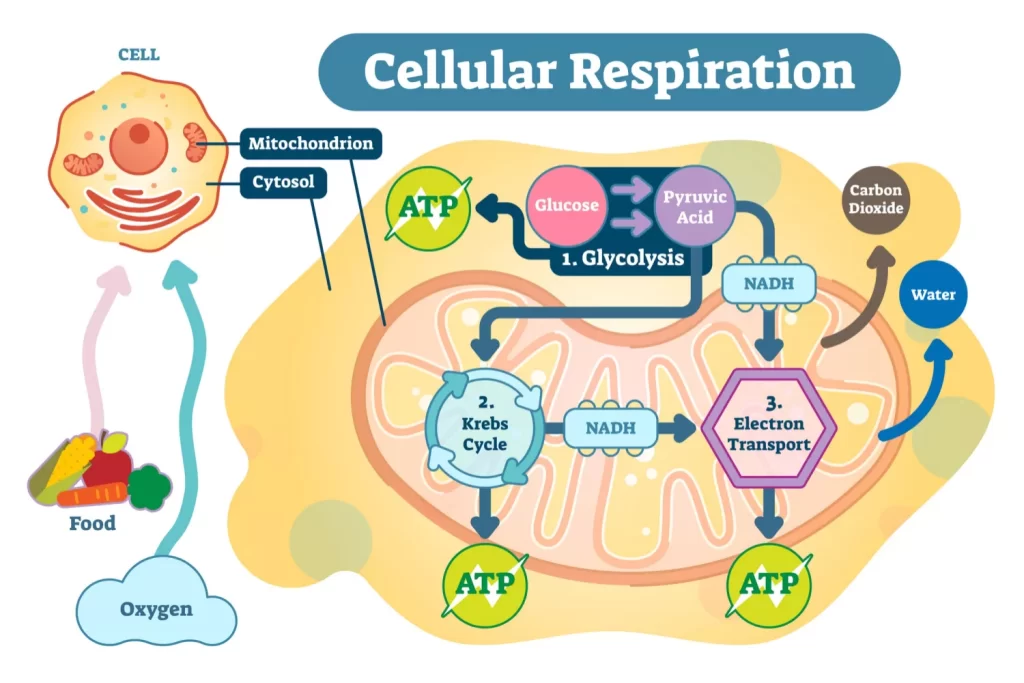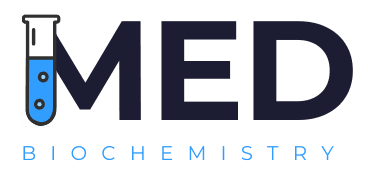
Image Credit – Hema
Every living organism, from the smallest bacteria to the largest mammals, needs energy to survive. This energy powers every biological function, from movement and growth to repair and reproduction. The process by which cells produce energy is called cellular respiration. It is one of the most important biochemical processes in all living systems, as it converts the food we eat into usable energy that powers life itself.
Cellular Respiration – The Energy Process of Life

What is Cellular Respiration?
Cellular respiration is the process by which cells break down glucose (a type of sugar) and other food molecules to produce energy in the form of adenosine triphosphate (ATP). ATP acts as the “energy currency” of the cell, providing the power needed for various cellular activities.
In simple terms, cellular respiration is how our cells convert the energy stored in food into a form that can be used for essential life processes. It occurs in both plants and animals, although the sources of glucose may differ.
Importance
Without cellular respiration, living organisms would not be able to perform vital activities. This process provides the energy required for muscle contraction, nerve transmission, active transport, cell division, and the synthesis of important molecules.
For example, when you run or exercise, your muscle cells need extra ATP to keep moving. Cellular respiration ensures that this ATP is continuously produced by breaking down glucose and oxygen in your body.
The Stages of Cellular Respiration
Cellular respiration is a multi-step process that takes place in both the cytoplasm and mitochondria of cells. It occurs in three main stages: glycolysis, the Krebs cycle, and the electron transport chain.
1. Glycolysis
Glycolysis is the first step of cellular respiration and occurs in the cytoplasm. During glycolysis, one molecule of glucose (a six-carbon sugar) is broken down into two molecules of pyruvate (a three-carbon compound).
- It does not require oxygen, so it can occur in both aerobic (with oxygen) and anaerobic (without oxygen) conditions.
- This process produces a small amount of ATP and NADH, which are used in the next stages.
2. Krebs Cycle (Citric Acid Cycle)
The pyruvate molecules from glycolysis enter the mitochondria, where they are converted into acetyl-CoA. This compound then enters the Krebs cycle, a series of chemical reactions that generate energy-rich molecules.
- The Krebs cycle produces carbon dioxide as a waste product.
- It also generates more NADH and FADH₂, which carry high-energy electrons to the next stage.
3. Electron Transport Chain (ETC)
The electron transport chain is the final stage of cellular respiration and occurs in the inner membrane of the mitochondria.
- Here, the electrons from NADH and FADH₂ are transferred through a series of proteins.
- As the electrons move, energy is released and used to pump protons across the membrane, creating a gradient.
- This energy drives the production of ATP through a process known as oxidative phosphorylation.
- Oxygen acts as the final electron acceptor, combining with hydrogen to form water.
This stage produces the largest amount of ATP, making it the most efficient part of cellular respiration.
Aerobic vs. Anaerobic Respiration
There are two main types of cellular respiration: aerobic and anaerobic.
- Aerobic respiration requires oxygen and produces a large amount of ATP. It is the most common form in animals, plants, and many microorganisms.
- Anaerobic respiration occurs in the absence of oxygen. It produces less ATP and often results in by-products like lactic acid (in animals) or ethanol (in yeast).
For example, during intense exercise, when oxygen levels in muscles drop, the body temporarily switches to anaerobic respiration, which causes lactic acid buildup and muscle fatigue.
Cellular Respiration in Everyday Life
This is not just a biological concept—it’s happening in your body every second. When you eat food, your digestive system breaks it down into glucose. Oxygen, which you inhale from the air, is delivered to your cells through the bloodstream. Inside your cells, glucose and oxygen react to produce ATP, water, and carbon dioxide. You exhale the carbon dioxide as waste, while ATP powers everything your body does.
The Equation of Cellular Respiration
The overall chemical equation
C₆H₁₂O₆ + 6O₂ → 6CO₂ + 6H₂O + Energy (ATP)
This simple equation summarizes the entire process: glucose and oxygen combine to produce carbon dioxide, water, and energy.
Cellular respiration is the cornerstone of life’s energy system. It allows every cell to extract energy from food and sustain biological functions. Without it, life as we know it could not exist. By understanding this process, we gain insight into how our bodies, and indeed all living things, maintain energy balance and survive. Respiration is a perfect example of nature’s efficiency—turning simple molecules into the power that keeps the world alive.
Frequently Asked Questions
What is cellular respiration?
Cellular respiration is the process by which cells break down glucose and oxygen to produce energy in the form of ATP, along with carbon dioxide and water.
What are the main stages of cellular respiration?
The three main stages are glycolysis, the Krebs cycle, and the electron transport chain, which together convert food energy into usable ATP.
Why is cellular respiration important?
It provides the energy required for all cellular activities, including growth, repair, movement, and maintaining vital body functions.

